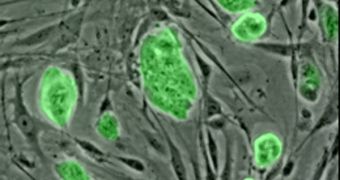Over the past few years, stem cells have been touted as the way medical science must follow in fields such as bioengineering, as well as in the newly formed synthetic organs department. These cells are so remarkable simply because they have the ability to differentiate and evolve into nearly every of the 200 cell types that can be found in the human body, including bone, cartilage, epithelial, muscles and nervous tissue. However, one of the problems is that not all of them can be made to do this. A new research makes it possible for embryonic stem cells to keep their pluripotent state for a long time.
If stem cells are left in the same state for longer than usual, researchers believe that they may yield clues as to what are the “engines” driving the changes that take place when the pluripotent cells (PSC) turn into other types. Completely understanding this process could pave the way to the emergence of a large number of medical applications of the cells, including in treating cancer and spinal cord injuries, as well as in creating artificial organs from a patient's own cells.
The latter ability means that countless people could be saved, because they would no longer have to wait on extended transplant lists. Their new organs would be entirely made out of cells harvested from their own bodies, which means that, once the new heart, kidney or lung is done, there would be no compatibility issues. Such a feat would allow doctors to stop prescribing immunosuppressive drugs to transplant patients. These medications are responsible for weakening the immune system, making the body vulnerable to a host of bacterial infections.
“Embryonic stem cells are characterized by this open state, but, up to now, we didn't know the mechanisms that maintain this state, or even if it is necessary for the full stem cell potential. We found that [the gene] Chd1 is critical for both, and for allowing an efficient reprogramming. Chd1 is important for allowing the normal differentiation process, and it is essential for playing the 'differentiation tape' backwards – bringing differentiated cells back to pluripotency,” the lead author of the new study, University of Coimbra PhD student in Experimental Biology and Biomedicine Alexandre Gaspar-Maia, explains.
The expert works now at the University of California in San Francisco (UCSF), under the directions of Eli and Edythe Broad Center of Regeneration Medicine and Stem Cell Research Professor Miguel Ramalho-Santos, PhD, who is also the senior author of the new research. “We now know that Chd1 is essential, and, so far, appears unique in its global effect, but we expect that there are major players yet to be discovered,” Ramalho-Santos says. He is also an assistant professor of obstetrics, gynecology and reproductive sciences, and pathology at the University.

 14 DAY TRIAL //
14 DAY TRIAL //